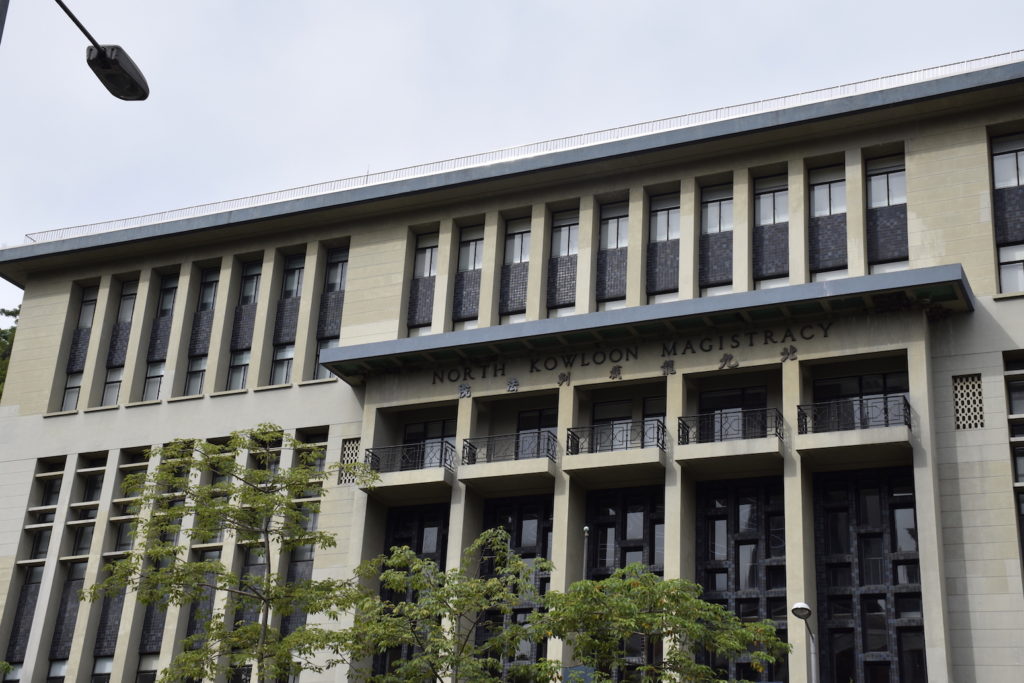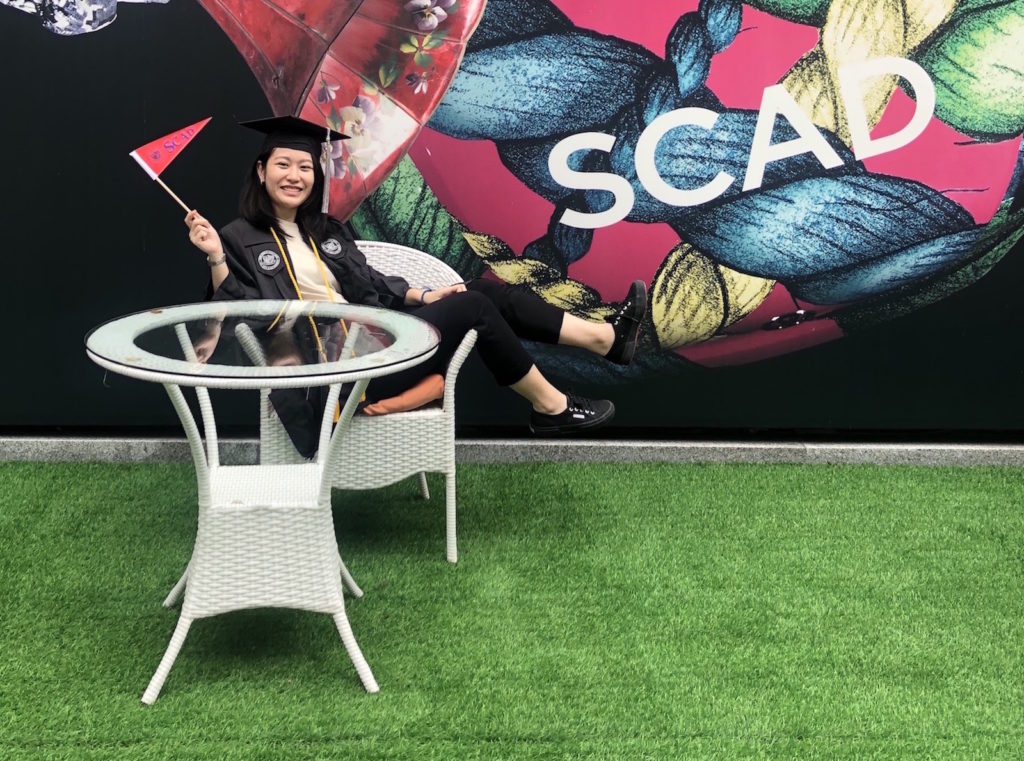Jessie Cheung falls back into her armchair with a yawn, her laptop open in front of her.
Across Hong Kong, students are beginning their semesters online, the new school year reduced to awkward silences and tech mishaps on Zoom.
But for Cheung, a student at the now-defunct Hong Kong campus of Savannah College of Art and Design (SCAD), there is no return to the classroom for her to look forward to.
In March, students and staff were informed that her school would be closing for good after 10 years in Hong Kong—dealing the latest blow to the city’s already dwindling art scene and signifying an impending brain drain for the creative industry.
The university was reportedly dealing with a deficit of about HK$322 million (US$41 million), a financial statement shows.
Current students, an email said, could either take online courses for the rest of their degree, or move to SCAD’s other campuses in the US. (The school also has campuses in Savannah and Atlanta, both cities in the state of Georgia.)
Even when social distancing measures lift, the remainder of Cheung’s undergraduate life will look a lot like this particular September morning—hunched over a laptop in her living room.

“It’s just unfair, the abruptness of it all,” the 21-year-old said.
A Change.org petition appealing to the school board to reconsider the closure attracted almost 2,800 signatures. “We are greatly disappointed with the lack of communication between SCAD and us students, especially with a decision that is life-changing and requires careful thought and planning,” it read.
Perhaps predictably, the calls were in vain. The campus shut in June, and in the final days, students and staff trickled back to the building to pack their belongings and say their goodbyes.
With just one more semester before graduating, Cheung says the impact of the closure on her academic path is minimal, but she sympathizes with the university’s younger students.
“Imagine being a freshman this year and finding out that the school was closing only after a semester of being here. I’d be livid.”
Filling in the gaps of Hong Kong’s art scene
Since opening in 2010, SCAD’s Hong Kong campus has carved a niche in the city’s arts education landscape. The university offers about two dozen bachelor’s and master’s programs, with some of their concentrations—like motion media design, sequential art and luxury management—not taught at any other institutions in the city.
At SCAD, Cheung appreciated her teachers’ hands-on approach to learning. Her graphic design classes had her pitching ideas to professors as she would at a workplace, allowing students to see beyond textbooks and theories.
The school also provided her with a strong network of contacts, from alumni to professors with valuable industry connections. Now, without this access, Cheung worries that her job prospects have narrowed.
She was planning to find a job at a visual communications firm and later pursue a master’s degree at SCAD.

“But now that isn’t an option. I’m not very certain about what the future has in store for me anymore,” she adds.
A dream university
Gabriel Mataleo, who just completed his first year at SCAD, is taking a gap semester and deciding whether to transfer to the Savannah, Georgia, campus in November.
The 19-year-old, a UX/UI (user experience/user interface) major, knows he will look back fondly on his first year at SCAD. When he talks about the school, he holds nothing back: both in his praises for, and grievances over, the campus that was once his home.
“It’s the passion and ferocity from the students that really drew me to this place,” Mataleo said.
Many—including himself—would often stay at school long after their classes are finished for the day, deep in discussion over projects or just mulling over topics taught by their professors.
“I’ve made incredible and lifelong friends here,” he added.
Since April, Mataleo has been interning at contemporary art space The Mills, a former textile mill that joins the ranks of PMQ and Tai Kwun as large-scale revitalization projects in the city.

“What makes SCAD so appealing is the various career prospects it offers to their students,” he said.
Lost opportunities
When asked about its impact on the creative community, both Cheung and Mataleo agreed that the closure of SCAD could prompt an exodus of artistic talent in the city.
“Many of SCAD’s younger students will want to finish their degrees, and definitely not in an online setting. Many of them may take up SCAD’s offer of relocating to Savannah or Atlanta, and that is disconcerting to the local creative community as there is already a minuscule pool of home-grown creative professionals.” Cheung said.
Second year photography student Daniel Ching told Coconuts that he is taking a gap year to work on his portfolio. His plans to move to Atlanta have been put on hold due to the coronavirus.
“If I’m all in the way in Atlanta on the other side of the world, it’s going to be harder for me to get interviews and job opportunities in Hong Kong because I won’t know the local industry as well.”
Stigmatization of the arts
A study done by the University of Hong Kong in 2003 looking at 11 creative sectors cites a number of factors hindering arts development in Hong Kong: the limited number of institutions offering the relevant courses, insufficient government funding and the lack of a sophisticated market for contemporary local art.
17 years and a campus closure later, not much has changed.
“Our government won’t even bother issuing a statement about how they’re going to deal with the closure [of SCAD] and its impact on the local creative industry,” Mataleo said.
The apathetic response, many would agree, is in line with the city’s low regard for arts education. In the eyes of a traditional Hong Kong family, a straight-A student pursuing an artistic career—as opposed to the conventional, lucrative path of studying medicine or law—would be akin to shooting yourself in the foot.

At the city’s top universities, or the “big three” including University of Hong Kong, Chinese University of Hong Kong and the University of Science and Technology, degrees in concentrations like fashion design and photography aren’t part of the course catalogue. Instead, the offering of such programs is relegated to their less reputable community college affiliates, which are often seen as paths for students with subpar grades.
“There is a clear lack of desire to cultivate creative talent here,” Hong Kong-born playwright Jingan Young wrote in a 2015 South China Morning Post column. Her op-ed was a response to City University’s scrapping of its two-year Master of Fine Arts degree in creative writing, an internationally reputed degree that has churned out some of the Hong Kong’s top writers.
Read more: British street artist creates stunning rooftop mural in Hong Kong
Recent SCAD Advertising and Branding graduate Ruby Chung said many of her friends who work in the industry suffer criticism from parents and peers alike.
“Stability is at the forefront of many people’s minds and having a career in the creative field just isn’t seen as practical,” she said. “I think that our values in Asia are more geared towards making money through traditional professions such as business or commerce.”
“Much of Hong Kong’s older generation still view art as an interest or hobby, rather than a career,” she said, adding that she feels lucky to have her parents’ support.



Reader Interactions